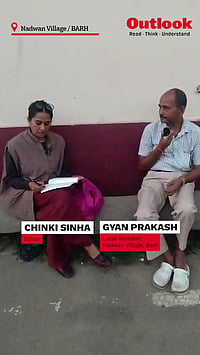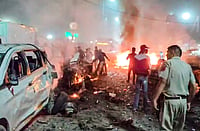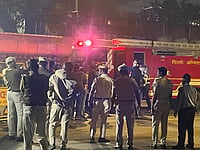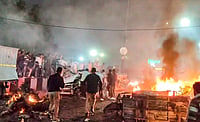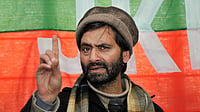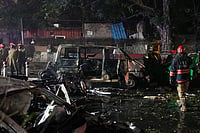At 9 pm, January 4, Major General Randhir Kumar Mehta, ADGMI (Additional Director General of Military Intelligence) received a call informing him that he had been selected by the United Nations for the post of Military Advisor in the department of peacekeeping operations. This effectively means he will be overseeing all operations involving the military. The appointment ended an almost five-month selection process that put an Indian in that job for the first time in about 35 years (General I.K. Rikhye held the prestigious post in the '60s). The appointment comes at a time when UN peacekeeping operations are becoming more complex, messy and increasingly involve use of force.
India has participated in 41 of the 59 peacekeeping missions that the UN has mounted so far. Out of the 16 UN missions currently under way, India is participating in eight, mostly in Africa (Ethiopia, Eritrea, Congo, Sudan, Ivory Coast) but also in Kosovo, Cyprus and Lebanon.
Just how complex is Gen Mehta's assignment can be gleaned from another fact: out of the 59 operations the UN has undertaken till now, only 13 were established in the 40 years between 1948 to 1988. That was the era of 'classic' peacekeeping operations during which there was a peace between the warring parties to keep. Then the UN would step in following a peace pact brokered between the warring parties; the peacekeepers were unarmed, and their principal task was to report any violation of the peace agreement. This era culminated in the UN peacekeepers bagging the Nobel Peace prize in 1988.
Now, the world has become increasingly divided and inclined to take to arms. It has only compounded the UN's problem. Thus, in January 1988, 11,121 military, police and civilian personnel were deployed in UN peacekeeping operations, on an annual budget of $230.4 million. In 1994, the budget touched $3.6 billion, and the personnel strength jumped to 78,000. Since then, the number of UN personnel on peacekeeping duties has more or less remained the same. In September 2004, there were 62,289 soldiers, civilian police and military observers deployed; the civilian staff together accounted for another 11,124 personnel. Some 102 countries are contributing these personnel.
India has sent, over the years, some 74,000 soldiers, among the highest contributors of troops for UN peacekeeping. Senior officials say it's India's measure of commitment to both the UN Charter as well as the idea of peace. Obviously, such large number of troops is a reflection of India's capability in terms of professional soldiering.
Indian peacekeepers wearing the blue UN beret have worked in areas where peacemaking had given way to 'peace building' and post-conflict reconciliation processes. The complexities of UN operations came to the fore in 1993. Then Lt General Satish Nambiar declined to continue as force commander and head of UN in the erstwhile Yugoslavia after he noticed an increasing NATO tendency to "poke its nose into UN affairs". General Nambiar's term was about to end, but the UN wanted him to continue for another year. Nambiar, however, declined to continue in the post. As the general recalls, "It was the NATO versus Satish Nambiar. I didn't have a hope in hell." As it transpired, Gen Nambiar's suspicions were well-founded, with the NATO getting increasingly enmeshed.
In September 2000, the Indian government decided to withdraw the Indian troops deployed in Sierra Leone under UNAMSIL (UN Assistance Mission for Sierra Leone) "in order to give a chance to other nations" to operate in UNAMSIL. But one reason behind the decision was the mismatch between the ground realities in Sierra Leone and the resources that UN had put at the mission's disposal.
Gen Mehta, then a brigadier, was sector commander at Kenema, Sierra Leone, when the operations began to get trickier (see interview). He successfully confronted the rebels through a coordinated multinational operation. Gen Mehta received the Yudh Seva Medal (YSM) for gallantry in operations in Sierra Leone and later, the Vishisht Seva Medal (VSM).
Gen Mehta was commissioned into the Indian army in 1968. After a probation with the 6th battalion, the parachute regiment, he was selected to be a paratrooper. After a short stint in Agra in 1969, he moved to Sikkim with the battalion. In 1972, he was appointed instructor in the College of Telecommunication and Engineering, Mhow. Subsequently, he commanded the 7th Para in 1989, the 11 Mountain Brigade in Assam and the 29 Infantry Division during Operation Parakram.
Even as General Mehta readies for his next assignment, there's a proposal that India should contribute troops to UN Strategic Reserves, a pool which can deploy at short notice to a list of countries which the contributing nation will not be averse to send troops to. Under examination is whether India is prepared to deploy a brigade or a battalion. India had previously expressed a willingness to commit a brigade under the UN stand-by arrangement system. But the system itself did not take off, largely because there was no agreed list of countries where the troops could be despatched.
Currently, India has between 4,000 and 5,000 troops deployed in UN peacekeeping operations. By March-end this year, given India's commitment to send troops to Sudan, its troop contribution will touch 8,000. Since most industrialised countries don't have the requisite troops to deploy in conflict zones, they restrict their contribution to providing financial assistance. Countries like the US and UK have the ability to make troop contributions, but are engaged in evangelical military operations in Iraq and Afghanistan. No wonder, South Asia accounts for 40 per cent of UN peacekeeping troops, with Pakistan, Bangladesh and India making the bulk of the numbers, in that order.
Peace Warrior
Lt Gen Mehta becomes the first Indian in decades to be appointed to the top UN peacekeeper's post

Peace Warrior
Peace Warrior
Published At:
MOST POPULAR
WATCH
MORE FROM THE AUTHOR
×








